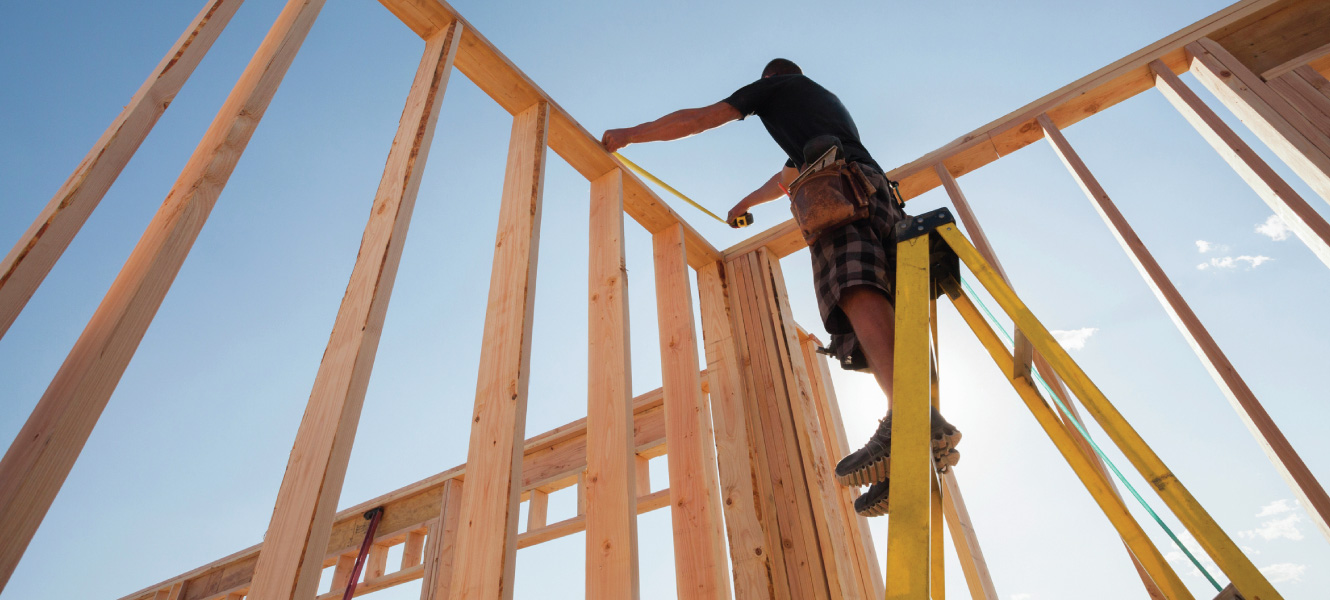If you plan to get financing, it’s important to understand your options related to lot loans, land loans and construction loans. It’s equally important to create your budget and stick to it as much as possible.
If you are financing the home, the first step is meeting with your lender to determine how much you can afford, and what kind of loan is right for you. This may seem obvious, but Lot/Land loans and Home Construction loans each have unique characteristics and lending options. What’s best for you will depend on your personal circumstances, the type of property you are going for, and your timeline for building the home. But don’t worry; we will be able to help you determine the best route for your situation!
In addition to working with your lender and determining your financing, start learning about and interviewing potential contractors. You will want to work with someone who provides high quality work while meeting your expectations on timing and frequency of communication. Get to know your contractor’s personality and communication style versus your own to prevent potential conflicts down the road. Communication is critical, especially as work progresses and unexpected revisions to the original plan may occur.
Once you choose your contractor, you can decide your plans and budget. A “per square foot” model will give you a good estimate, but some rooms will cost more than others – like the kitchen, for example. This is why your budget needs to cover more than just the cost of building. While construction will comprise the bulk of the cost, you’ll have a number of other factors like architectural fees, the cost of permits, impact fees, legal fees, decorating, landscaping, and more.
The following are tips that can help you get your home-sweet-home without breaking the budget:
- Know thyself, and plan accordingly for splurges. You’re building a new home – quite possibly the place you’ll spend the rest of your life. Don’t deny yourself things you want; instead, incorporate your anticipated splurges in the budget. If you absolutely can’t live without the luxury range with six burners and a convection oven, include it in your budget, and work around it. Figure out how much you’ll have left to spend on other appliances and features, and plan as necessary.
- Create and understand the design plan. Your contractors/designers have an intimate understanding of interior space—how it functions, how it should look, and how to make it both attractive and comfortable. Take advantage of this knowledge as you envision the completed home. Don’t start buying furniture thoughtlessly; start with the floor plan. Obtain a detailed set of drawings and decide on furniture, appliances, plumbing fixtures, tiles, trim, and so on before construction begins. Once the plan is in place, you’ll have a great sense of how much each room will cost, with a pricing breakdown for each feature. Difficult as it may be, don’t deviate from the plan. You’ll thank yourself later!
- Have a contingency. Setting aside a contingency fund is a necessary part of building a home. Chances are something will happen during the building process that you did not anticipate. Maybe there’s an issue with the soil in your plot, or maybe you run into a problem with local building permissions. Maybe your current home isn’t selling, and the prospect of carrying two mortgages feels overwhelming. Whatever the reason, write a plan B and have the contingency fund to back it. The contingency should be fairly high at first—up to 15% to 20%. You can decrease the contingency later down the line, down to 10% after you’ve completed the budget plan and line drawings and so on. Ideally, you won’t have to spend any of it – and you’ll have some extra money when the project is complete.
- Don’t overspend—even a little. The surest way to destroy your budget is to say, “Well, while we’re at it, let’s add…” or, “This addition will only cost a couple hundred dollars.” Do that a few times, and you can kiss your budget goodbye. Remember, you made a plan, so stick to it. If something comes up that you can’t live without, trade it off. You’re not the first person to find a remarkable, one-of-a-kind, must-have item during the construction project timeline. Take a look at your budget again and see where you can reduce costs to afford this new item. For example, consider forgoing hardwood flooring in the spare room and installing carpeting instead. Either way, the goal is to stay on track.
Whether you are considering building or purchasing an existing home, this is an exciting time in your life. Home ownership is an investment in your future and provides a number of benefits you and your family.
